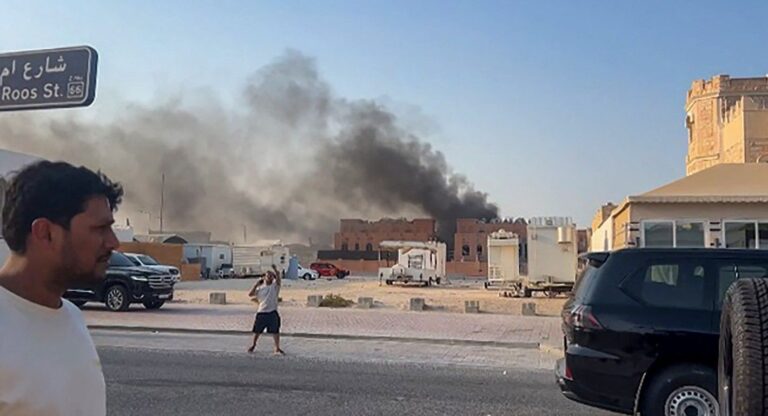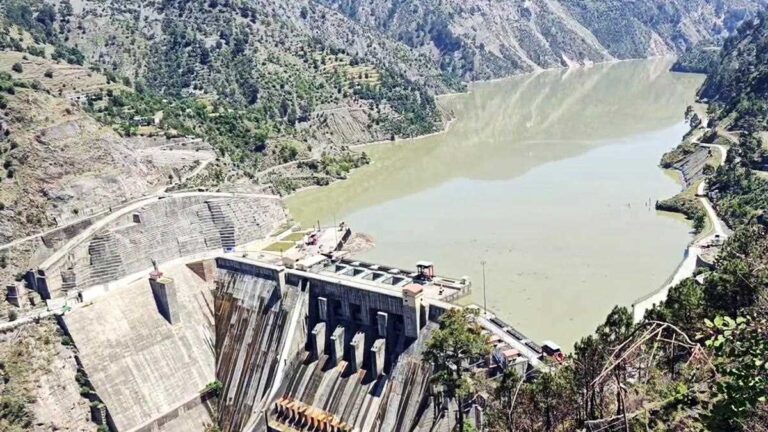
Source: The Defense Post/AFP
Fatima Saif Khan
On September 12, 2024, a report claiming that Osama bin Laden’s son, Hamza bin Laden, is alive, reignited fears of the resurgence of Al-Qaeda. This news came in the midst of scholarly debates over the future of the said group. While some experts argue that Al-Qaeda is setting the stage for its revival, others have a more cautious view, suggesting that it lacks the capability to pose a global threat. However, recent United Nations’ reports highlight a significant increase in Al-Qaeda’s activities inside of Afghanistan, suggesting that the organization is anything but inactive. These concerns necessitate an assessment of its strategic playbook, with a view to mapping its future.
An Old Concern
Back in 2010, while talking about Al-Qaeda, the-then U.S. President, Barack Obama, had argued that “if the Taliban retakes this country (Afghanistan), al-Qaeda can operate with impunity.” Today, three year after the Afghan Taliban’s assumption of power, Al-Qaeda is reportedly capitalizing on safe havens in Afghanistan to rebuild its capabilities and advance its jihadist agenda. The question which then merits attention is this: What will the form and extent of Al-Qaeda’s revival be, considering the existing opportunities and constraints in the region? For starters, while Al-Qaeda is constrained by the Afghan Taliban’s quest for international legitimacy, it is still strategically operating at multiple levels. Locally, it is more focused on securing its safe havens in Afghanistan while purposely espousing regional terrorist and insurgent groups in neighboring countries, particularly Pakistan. Globally, Al-Qaeda’s strategy is centered on its affiliates, such as those in the Sahel and Arabian Peninsula. Thus, Al-Qaeda’s current strategy of lying low suggests it is consolidating its position in South Asia to avoid Western detection.
Al-Qaeda’s Strategic Playbook
In order to better predict Al-Qaeda’s potential strategy in the region, it is crucial to understand its past actions in analogous situations. During the first Afghan Taliban regime (1996-2001), Al-Qaeda, protected by Taliban’s founder, Mullah Omar, not only established its training camps but also secured finances, which laid the groundwork for its global activities. This symbiotic relationship allowed Al-Qaeda to use Afghanistan as a strategic base, from which it ostensibly orchestrated the 1998 U.S. embassies’ bombings in Tanzania and Kenya, and the 9/11 attacks. Similarly, as of this writing, Al-Qaeda is reportedly collecting revenues through gold mines in Afghanistan, building up its financial strength.
Moreover, Al-Qaeda had anticipated the U.S. exit from Iraq before it happened, indicating its preparedness for the U.S. withdrawal from Afghanistan as well. Its strategic foresight can be assessed from Ayman al-Zawahiri’s speeches, in which he articulated a comprehensive plan consisting of three core elements: public appeasement, fieldwork, and outreach, coupled with combat and inclusive governance. This speaks to the extent to which Al-Qaeda must have planned in advance to manage the transitioned political landscape in Afghanistan, after the U.S. withdrawal.
Lastly, post 9/11, Al-Qaeda’s revival was multidimensional. First, following its defeat at the hands of the U.S. in Afghanistan, it consolidated itself, stepping up its attacks in the form of spring offensives against Coalition Forces in Afghanistan. Second, it expanded its influence in different regions by forming alliances with existing militant organizations in conflict-ridden areas. This approach created Al-Qaeda in the Islamic Maghreb (AQIM) in 2006/07, led to the allegiance of Al-Shabaab in East Africa, and also helped establish regional chapters such as Al-Qaeda in Iraq (2004), Al-Qaeda in the Arabian Peninsula (2009), and Al-Qaeda in the Indian Subcontinent (2014). Thus, as per Daniel Byman, Al-Qaeda kept itself alive, largely through its affiliates, while maintaining its base in Afghanistan.
Al-Qaeda’s Current Status
Afghanistan has remained crucial for Al-Qaeda in achieving its long-term goal of establishing a caliphate. A recent call by Al-Qaeda’s de facto leader, Saif al-Adel, directed at Muslims, particularly living in Western countries, to migrate to Afghanistan to support the Taliban and learn from their experiences underscores this point. This centrality was, as aforementioned, underlined and used by Al-Qaeda in the past, too. For example, in 2001, Osama Bin Laden declared Afghanistan as the only country having a “real Islamic system’’ and that, “all Muslims should show loyalty ( to Afghan Taliban).” This signified the continued intent of Al-Qaeda to use Afghanistan as a symbolic bastion for its ideological ambitions.
However, the group is somewhat marred by uncertainties surrounding its leadership. While it only took Zawahiri a month to claim formal leadership of Al-Qaeda, Saif ul Adel has yet to be accepted in that role. Two things could be drawn from this. First, not announcing the Emir could be a new strategic move to protect the leadership. Second, Adel has not been able to gain legitimacy within the ranks of Al-Qaeda.
Al-Qaeda’s Deception Plan and Pakistan
Against this backdrop, Al-Qaeda is left with three options: to lay low in this region and conduct covert operations; to increase its direct activities; and to abandon its global agenda in favor of its existence in Afghanistan. Currently, Al-Qaeda, directly and indirectly, is active in different regions. Without provoking the Taliban or drawing significant attention from the West, Al-Qaeda may find Pakistan an arena for its resurgence. This is also because the continued provision of sanctuaries in Afghanistan is not a given as the Taliban have pledged that they would not allow their territory to be used by any terrorist organization.
In an interview with this scribe last year, Bruce Hoffman expressed his concern that “Al-Qaeda, together with the Afghan Taliban and the Tehrik-i-Taliban Pakistan (TTP) , will try to overthrow Pakistan’s democratically elected government.” Pakistan has indeed observed a surge in its terrorist attacks since 2021, with TTP perpetrating most of those, underscoring the significant support it receives from external actors, including Al-Qaeda. That being said, the Afghan Taliban have maintained plausible deniability when it comes to providing any support to TTP, framing it as an internal matter of Pakistan.
The question that all this compels one to ask is this: Why Pakistan? First, Al-Qaeda is reasonably familiar with the lay of the land given its past operational experiences in the region. Second, Al-Qaeda has strong links to local and regional terrorist groups. Third, instability and chaos in Pakistan will push groups like Al-Qaeda to make attempts aimed at exploiting fault lines.
Consequently, while acting as TTP’s supporting element, Al-Qaeda has purportedly deputed commanders while giving the group weapons and manpower. Furthermore, Al-Qaeda has revived its training camps along the Afghanistan-Pakistan border in provinces like Nangarhar, Kandahar, Kunar, and Nuristan to train TTP fighters . Here it is worth recalling that both Al-Qaeda and the Afghan Taliban used the border areas to good effect while mounting an Afghan-led insurgency throughout Afghanistan, against foreign troops. Al-Qaeda wants to replicate the same approach in its operational-level alliance with TTP.
All this suggests that Al-Qaeda, committed to its global agenda, will likely become more active in the region. Therefore, instead of focusing on how and why Al-Qaeda might plan a spectacular attack, the world must identify when and where it could strike. Last but not least, to counter Al-Qaeda, TTP must be targeted through a robust strategy.
Fatima Saif Khan is a Research Associate at the Center for Governance and Research.
The views expressed in the article are the author’s own and do not necessarily reflect those of Pakistan Politico.




